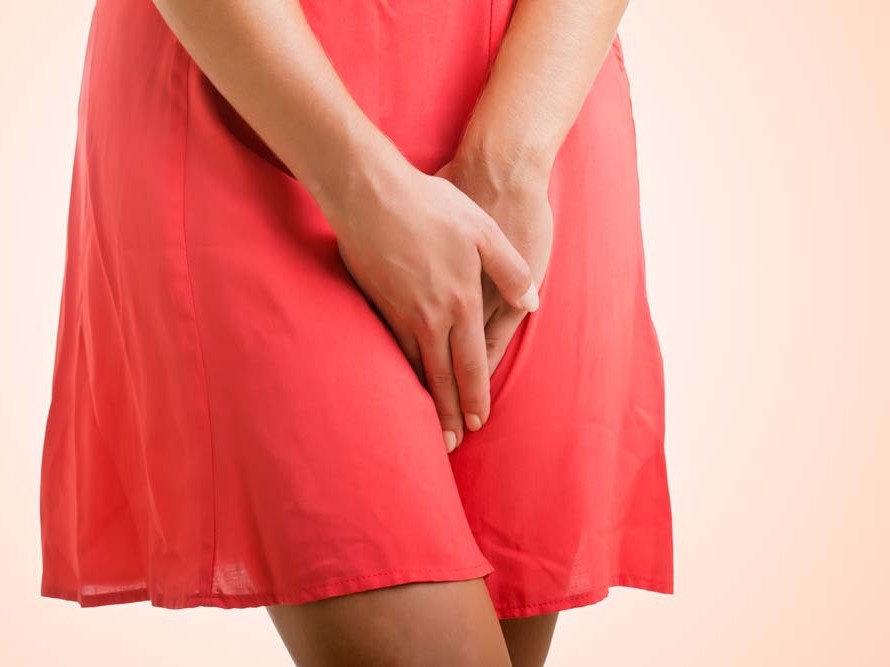Vaginal discharge in women is always there, even if the fair sex is absolutely healthy. The question is what they should be to be considered the norm. Unfortunately, not everyone knows the answer. In particular, white discharge, like egg white - what does it mean?
Features
What does discharge mean like egg white? This interests many. Almost colorless, whitish or slightly yellowish, liquid or slightly viscous, odorless - such discharge may be a variant of the norm.

But only if they are not accompanied by other symptoms such as itching, burning when urinating, or even at rest, swelling of the mucous membrane or redness of the skin. The appearance of any of these signs suggests that there is a pathology.
When is discharge normal, like egg white?
Natural vaginal discharge can, as already mentioned, resemble egg white. If there is no discomfort, then they are a variant of the norm. Their main function is to moisturize the walls of the vagina and protect the reproductive system from pathogenic bacteria.
Vaginal discharge creates an environment favorable for the reproduction of normal female microflora, that is, lactic acid bacteria. It is because of the vital activity of such microorganisms that the secretions may have a faint, sour smell. Normal microflora does not allow pathogenic bacteria to multiply.
The normal amount of vaginal discharge per day is not more than 1 tbsp. Usually they have a liquid consistency, but during the period of ovulation they become more viscous and stretching, that is, they resemble egg white. This can occur before the onset of menstruation. Moreover, during this period, the volume of secretions similar to egg white increases. That is, during this period you should not panic. Although consult with a gynecologist does not hurt.
When are trailing discharge a sign of pathology? Nuances
Not everyone knows that these are secretions, like egg white. They are a symptom of a disease if:
they are becoming more dense, and their number is abnormally increasing;
body temperature rises;
unpleasant sensations appear, aggravated by physical exertion or even with a change in posture (for example, if a woman throws her legs upside down) - this may indicate the onset of candidiasis;
the discharge is accompanied by pain during and after intercourse, during urination and beyond;
an unpleasant odor appears;
there is a feeling of dryness during intercourse.
It is known that foamy discharge or a change in their shade (when they turn yellow, green or brown) indicates the presence of sexually transmitted infections.

But even colorless discharge, resembling chicken egg protein and accompanied by the listed symptoms, can talk about pathology. And when they appear, you need to contact a gynecologist.
Vaginal discharge, like egg white, in different phases of the menstrual cycle
It should be noted that the main characteristics of vaginal discharge may vary depending on the phase of the menstrual cycle. We explore this nuance in more detail.
On the one hand, discharge, like egg white, before menstruation and when they are due to ovulation.
It divides the cycle into two halves, since it usually occurs almost in its middle. On the other hand, the ratio of the vaginal microflora changes at this time. But what it is - discharge, like egg white, many do not understand.
In the first half of the cycle
The number of opportunistic microorganisms in the vaginal microflora is relatively small, and the discharge is more liquid and transparent. As a rule, small stains with a diameter of a centimeter or two are noticeable on the linen at this time, since only a few milliliters stand out. In some women, even in this period they can be mucous and resembling protein.
Second half of the cycle
During ovulation, the volume of transparent secretions, like egg white, increases to 5 ml per day or more, they become more viscous and viscous. After this, the action of the hormone estrogen begins to decrease and at the same time, the role of progesterone increases.
So all the second half of the cycle, vaginal discharge can resemble egg white. By the way, at this time, the number of opportunistic microorganisms in the vaginal microflora increases, which include staphylococci, streptococci and Escherichia coli. Sometimes the difference is very large - the level grows by 100% or more. It also affects the consistency of secretions. But they still remain not plentiful.

Their volume grows only on the eve of menstruation. Then, discharge resembling egg white may acquire a more pronounced cream, yellowish or white color. In any case, such a cycle is absolutely normal for an adult healthy woman and persists until the onset of menopause. Including discharge is observed, like egg white, and after ovulation for some time.
After intercourse
As a rule, in women after intercourse there is no discharge, reminiscent of egg white. The exception is the onset of sexual activity, as well as intimate contacts after a long break. Many believe that in girls, defloration is accompanied only by bleeding. This is actually not the case. Even bleeding is not always possible, but in the next few days, discharge may be more malleable. They should not contain impurities, accompanied by pain or discomfort.
With the resumption of sexual activity after a long break, the discharge can also become more viscous, sometimes even denser clots appear in them. This occurs immediately after intercourse. But even for the whole day after it, mucous secretions can be observed, which indicate that the body is cleansed of the used lubricant.

Hormonal contraceptives can affect the consistency and volume of secretions - according to the same pattern as the hormonal background during the natural cycle. While taking the tablets, the amount of mucus will decrease, it will become more viscous. Refusal of contraceptives will lead to a more fluid consistency. A similar pattern is observed with breastfeeding.
Mucous discharge with vaginosis. Time to sound the alarm!
Sometimes vaginal discharge in the form of egg white can be a symptom of vaginosis. This pathology is not an inflammatory process, but it can provoke it. Vaginosis indicates a violation of the composition of the microflora of the vagina. If the pathogenic microflora does not exceed 10%, this diagnosis is not made. But a woman is still required to be more careful, because with a lack of lactic acid bacteria, conditionally pathogenic microorganisms multiply more actively.

Bacterial vaginosis is dangerous in that it creates favorable conditions for such unpleasant things as cervical erosion and chronic inflammation of the organs of the reproductive system. For pregnant women, it is especially dangerous, since the risk of premature birth increases, the likelihood of developing postpartum septic complications is high.
Bacterial vaginosis often develops not only in women who often change their sexual partners, but also in those who have taken antibiotics incorrectly, in those who are overly fond of douching and antiseptic hygiene products, since such drugs seem to wash out lactic acid bacteria. Sometimes the cause of this pathology is a simple change when traveling to another city.
In addition, bacterial vaginosis can develop after some medical procedures, which are accompanied by the treatment of mucous membranes with antiseptic solutions.
Only a doctor can make an appropriate diagnosis. And to do this is not easy. Firstly, in about half of cases, bacterial vaginosis occurs without pronounced symptoms - only the discharge becomes thicker, less often - they get a grayish tint. Secondly, vaginosis can be detected only by the results of a bacterioscopic examination, that is, based on an analysis of a vaginal smear.

Treatment usually includes antibacterial therapy, for which vaginal suppositories are used. In addition, eubiotics are prescribed - drugs that contain lactobacilli and bifidobacteria. Often, taking immunostimulating drugs is also required.
Vaginosis Prevention
Since bacterial vaginosis is more difficult to cure than to prevent it, certain preventive measures should be taken:
Everyday routine pads should be worn correctly, changing them every 3-4 hours. By the way, products with aromatic fragrances should be avoided, since they can cause swelling in the external genitalia and change the nature of the discharge.
Refuse to wear synthetic underwear in favor of cotton. Modern models are quite attractive, but most importantly - they do not cause allergies.
Buy only high-quality black tights, since the cheap black dye used by unscrupulous manufacturers can provoke a fungal infection.
Do not wear tight underwear and tight-fitting clothing, as this leads to impaired circulation and contributes to the development of inflammation.
Wash properly (in front - back, and not vice versa).
And, of course, any doctor will say that you need to observe moderation in intimate life and choose condoms with caution, since latex can be allergic, and medicine knows many cases of latex vaginitis.
Discharges like egg white during pregnancy. Norm Options

Immediately after fertilization, changes begin in the body of the expectant mother, which should prepare her for bearing the baby. At this time, in addition, hormonal changes in the body occur, the level of progesterone rises.
All this affects the vaginal discharge, their color, density, texture. That is, even if before that they were transparent and colorless in a woman, then immediately after fertilization they can become more dense and stretching, resembling egg white. In addition, their number increases, since an increase in progesterone levels provokes a rush of blood to the pelvic organs, and this stimulates the production of mucus.
They are still needed to maintain a normal level of moisture in the vagina, as well as for self-cleaning. But now another function is added to this - protecting the fetus from infections and pathogenic bacteria. The fact is that more dense and stretching discharge form something like a cork that closes the cervix.
If the change in discharge does not cause discomfort, is not accompanied by irritation, then there is no reason for unrest. However, if a very sharp and unpleasant odor appears, this should cause an immediate medical attention, as it may indicate an infection, and in the first trimester it is fraught with a miscarriage.
Gradually, the level of progesterone will decrease, while the level of estrogen will increase, and after some time the vaginal discharge will again become liquid.
About the second week of pregnancy, the discharge can become not just viscous, but acquire a pronounced white tint. The fact is that a woman during this period increases the risk of developing thrush. If itching and irritation appear at the same time, you should immediately consult a doctor.
Recommendations
To increase the amount of discharge does not cause a woman inconvenience and discomfort, you need to use everyday sanitary pads and change them every 3-4 hours.
At the same time, it is impossible to use tampons during that period of pregnancy, when the discharge becomes more dense. The fact is that such tampons can not absorb mucous secretions resembling egg white, they will remain on the surface, and this can accelerate the propagation of conditionally pathogenic microflora. With the activation of such bacteria, various infections develop.
Mucous discharge during pregnancy. Pathology
If blood clots are mixed with secretions (like egg white) during pregnancy, you should immediately consult a doctor. Almost always, this speaks of some pathologies. A small implantation bleeding can occur when the egg is attached to the uterine endometrium.
During this period, a woman may experience stretching discharge mixed with blood. But they can last just a few hours. After that, any impurities in the blood should become an occasion to see a doctor. After all, such discharge can talk about an ectopic pregnancy, the threat of miscarriage and other dangerous pathologies.
Conclusion
Not everyone knows discharge, like egg white, what this means. But no matter what color they are, in any case, the situation should alert the woman and become an occasion to contact a gynecologist. It must be remembered that only the timely detection of the disease guarantees a positive result from the treatment prescribed by the doctor.